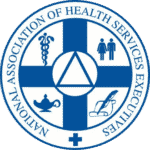Clinical leadership is one thing, but organizational leadership requires more than medical acumen. Becoming a modern physician leader is the next iteration in your healthcare career that can provide you with new challenges and rewards. This article will help you understand the skills you’ll need to evolve into a physician leadership role and the steps necessary to spark this evolution.
Step One — Networking with Peers
Most doctors understand that clinical skills are different from the people skills necessary to effectively build a practice. But when evolving into physician leadership, it’s the ability to network within an organization and build relationships that really matter. The process of building a doctor/patient relationship is just part of a process of honing your communication and collaboration skills. Emotional intelligence is key to building relationships with other doctors, staff, and administrative teams. Taking time to connect with colleagues, serve on committees, and give back to the team, will establish your role as a physician-leader
Step Two — Learn the Business of Medicine
Doctors understand the passion for serving patients and improving their lives. Clinical leaders understand this, but they also view the medicine industry for what it is — a business that needs to cash flow its operations. Understanding the business behind the practice of medicine is imperative for clinical leaders. Frequently, there is a gap between the administration’s bottom line and the clinical team tasked with providing care. The physician leader must bridge this gap by understanding the need for high-quality care balanced by lower costs and higher efficiency.
Step Three — Take Risks and Lead
The best organizations offer doctors a seat at the strategic and operational table. Physicians must make the effort to engage with others and take on these roles to move forward in the organization. This requires risk, whether it’s serving on a committee or applying for a physician leadership role within the facility. You can start by facilitating a meeting, offering to improve a process, or perhaps leading a project. The point is that you take the next step toward your goal of becoming a leader in the organization.
Step Four — Offer Your Input
Too often, doctors focus strictly on their clinical practice so when organizational changes happen, they are taken by surprise. The opinions of doctors are important to build high functioning teams in our healthcare facilities. Each day, operations and administrative decisions are made that affect the individual doctor’s work on the ground. Doctors can heavily influence these decisions if they take the time to make their voices heard. Proactively engaging with the administration is key to ensuring that the decision-making considers the impact on our clinical teams.
Step Five — Understand Your Audience
Every doctor receives training on exhibiting empathy in a clinical setting. But understanding your audience from an operational and administrative perspective is not something you’ve necessarily been trained for. It can be easy to come across as brusque or abrupt, particularly when your content knowledge is higher than those around you. However, a physician leader can consider the comprehension level and perspective of their audience and tailor their communications and activities to fit them. Successful leaders have the skills to take complex subject matter and simplify the message so that anyone from staff, to board members, to peers can understand the content.
Physician leaders have a crucial role in the ever-changing healthcare landscape. Clinical skills aside, these leaders will help shape the futures of the facilities where they work, but also the larger impact on the patients and staff around them.
If you’re searching for a role where you can apply physician leadership skills, please speak with the UHC Solutions teams. We can help keep your career moving forward.





